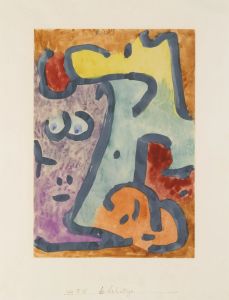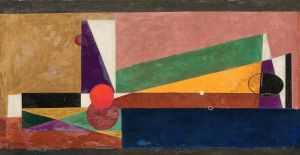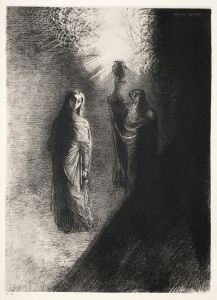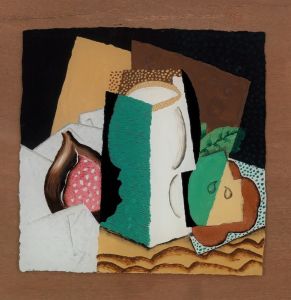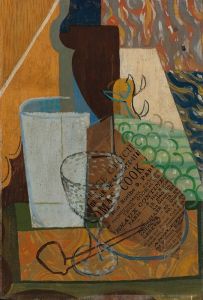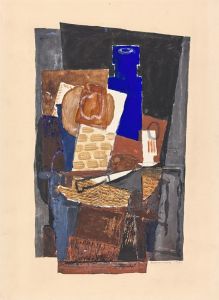
La Grande Mouche
A hand-painted replica of Louis Marcoussis’s masterpiece La Grande Mouche, meticulously crafted by professional artists to capture the true essence of the original. Each piece is created with museum-quality canvas and rare mineral pigments, carefully painted by experienced artists with delicate brushstrokes and rich, layered colors to perfectly recreate the texture of the original artwork. Unlike machine-printed reproductions, this hand-painted version brings the painting to life, infused with the artist’s emotions and skill in every stroke. Whether for personal collection or home decoration, it instantly elevates the artistic atmosphere of any space.
La Grande Mouche, translated as "The Large Fly," is a painting by the Polish-French artist Louis Marcoussis, a prominent figure in the Cubist movement. Marcoussis, born Ludwik Kazimierz Wladyslaw Markus in Warsaw in 1878, moved to Paris in the early 20th century, where he became an integral part of the avant-garde art scene. He adopted the name Marcoussis after a village near Paris, a decision reflecting his deep connection to his adopted country and its artistic milieu.
Marcoussis initially studied law in Poland before pursuing art at the Kraków Academy of Fine Arts. His move to Paris marked a significant turning point in his career, as he immersed himself in the vibrant artistic community of Montparnasse. There, he interacted with influential artists such as Pablo Picasso, Georges Braque, and Juan Gris, who were pivotal in the development of Cubism. This interaction significantly influenced Marcoussis's artistic style, leading him to embrace Cubism's fragmented forms and abstracted compositions.
La Grande Mouche exemplifies Marcoussis's mature Cubist style, characterized by a meticulous balance between abstraction and representation. The painting showcases his skillful use of geometric shapes and muted color palettes, typical of the Cubist movement. Marcoussis was known for his ability to blend elements of still life with abstract forms, creating compositions that challenge the viewer's perception of space and form. In La Grande Mouche, he employs these techniques to explore the interplay between reality and abstraction, a hallmark of his work.
The painting's title, "The Large Fly," suggests a focus on an everyday subject, a common theme in Cubist art, which often sought to elevate mundane objects to the realm of fine art. Marcoussis's work frequently included musical instruments, playing cards, and other ordinary items, reimagined through the lens of Cubism. This approach reflects the movement's broader aim to depict the complexity of modern life by breaking down objects into their essential forms and reassembling them in innovative ways.
Marcoussis's contribution to Cubism is significant, as he brought a unique sensibility to the movement, blending his Polish heritage with the Parisian avant-garde. His works are noted for their lyrical quality and subtle humor, distinguishing them from the more austere compositions of his contemporaries. La Grande Mouche, like many of his paintings, demonstrates his ability to infuse Cubist principles with a personal touch, resulting in artworks that are both intellectually engaging and visually appealing.
Throughout his career, Marcoussis exhibited widely, gaining recognition for his distinctive approach to Cubism. His works were featured in major exhibitions in Paris and beyond, solidifying his reputation as a leading figure in the movement. Despite the challenges of the interwar period and the disruptions of World War II, Marcoussis continued to produce art that resonated with the evolving tastes of the time.
Today, La Grande Mouche and other works by Louis Marcoussis are held in prestigious collections worldwide, including museums dedicated to modern art. His paintings continue to be studied for their innovative approach to form and composition, offering insight into the dynamic world of early 20th-century art. Marcoussis's legacy endures as a testament to his skill and creativity, marking him as a key contributor to the Cubist movement and the broader narrative of modern art.







